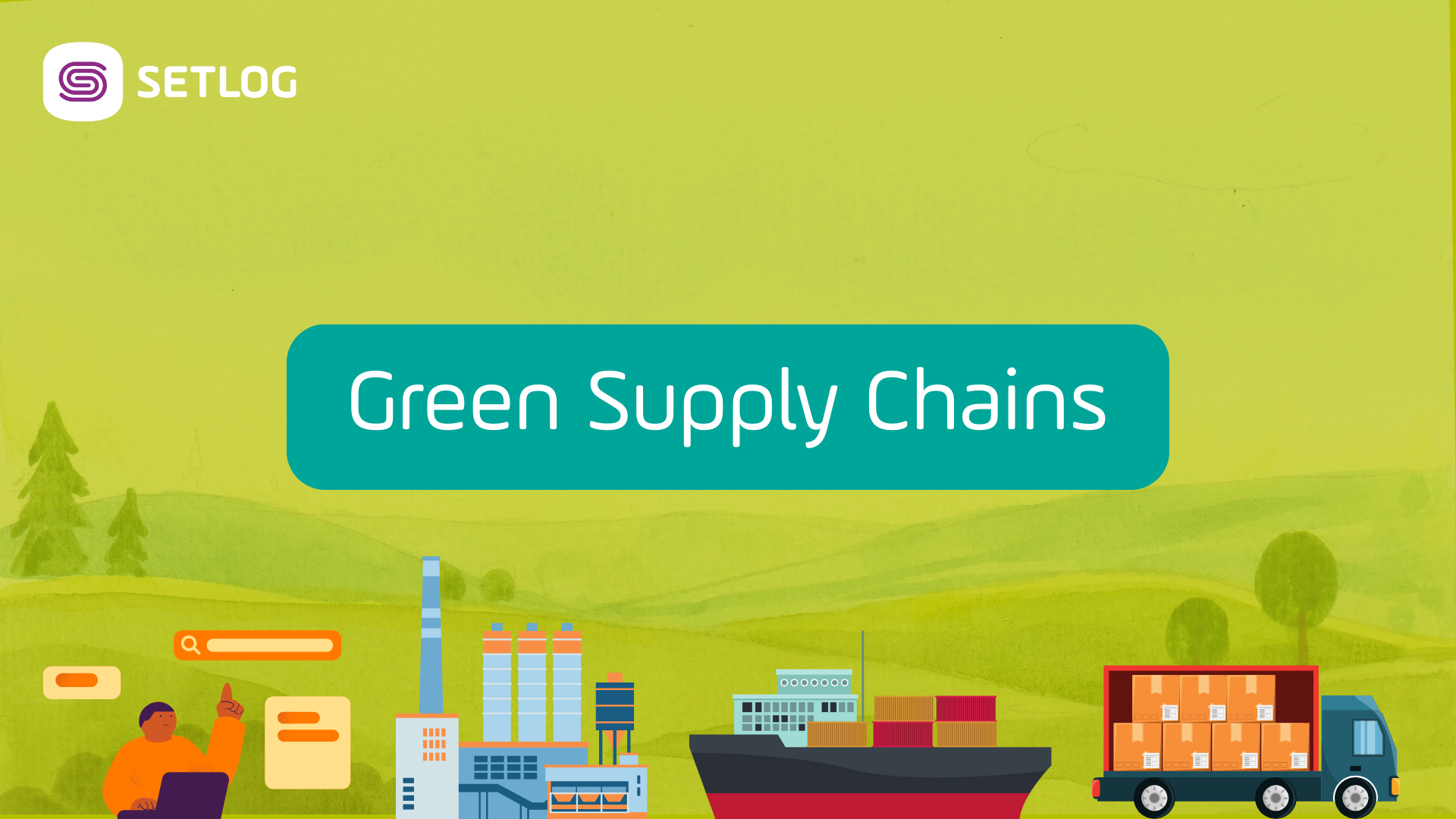
Over 90% of a company’s environmental impact lies within its supply chain. That’s a staggering figure — and a wake-up call. As climate goals tighten and regulations expand, green supply chains are no longer just a competitive advantage — they’re the new baseline. For supply chain professionals, this means rethinking established practices and aligning logistics, sourcing, and production with sustainability goals. But what does a green supply chain actually look like? This blog post offers a clear overview of what green supply chains are, why they matter, and where to begin.
What Is a Green Supply Chain?
A green supply chain integrates environmentally responsible practices across every stage of supply chain management — from product design and material sourcing to manufacturing, logistics and end-of-life product handling. The goal: minimize environmental impact without compromising efficiency or growth. As e-commerce and consumer expectations continue to rise, companies are under increasing pressure to build supply chains that are not only fast and cost-effective, but also sustainable and resilient. Emerging technologies like AI and machine learning play a key role in this transformation by identifying inefficiencies, reducing waste, and uncovering hidden opportunities for improvement.
The Pressure Is On: What’s Driving the Shift?
The move toward greener supply chains is gaining pace — Regulatory frameworks like the European Green Deal, Germany’s Supply Chain Due Diligence Act (LkSG), and expanding ESG disclosure requirements are raising the bar for compliance. At the same time, consumers are demanding transparency and low-impact products, while investors increasingly evaluate companies based on their sustainability performance.
But beyond external pressure, there are also significant risks to consider. Climate-related disruptions, volatile resource markets, and reputational damage from unsustainable practices are all affecting supply chain resilience. Companies that fail to act face rising costs, strained supplier relationships, and lost business opportunities. Those that move early, on the other hand, gain more than compliance — they build stronger, more future-ready supply chains.
From Theory to Action: Key Levers for a Greener Supply Chain
Sustainability in supply chains must move from principle to practice. Four areas are particularly effective for companies looking to reduce environmental impact, ensure compliance, and increase resilience:
- Source certified materials: Responsible sourcing is the foundation of any green supply chain. Certifications from organizations like the Forest Stewardship Council (FSC) verify that raw materials are harvested sustainably and ethically. Companies that commit to sourcing certified materials make measurable progress toward protecting ecosystems, improving labor conditions, and reducing the risks of unethical production.
- Audit suppliers regularly: Upstream violations often go undetected — yet early-stage processes like raw material extraction account for 18% of the EU’s consumption-based greenhouse gas emissions. Regular supplier audits help catch violations before they escalate. IKEA’s case is a benchmark: the company identified a supplier falsifying origin documentation and immediately cut ties. Proactive monitoring prevents long-term damage and enforces real accountability.
- Optimize logistics and reduce emissions: Logistics is a critical driver of supply chain emissions — but also a major area for impact. Green supply chains rely on smarter transport planning: consolidating shipments, optimizing routes, and reducing empty miles to lower fuel consumption and CO₂ emissions. Efficient packaging strategies also play a key role, minimizing volume and material use while improving load efficiency. By rethinking how goods move, companies can cut costs and reduce their environmental footprint at the same time.
- Cut and control waste: Manufacturing waste, including excess materials, emissions, and contaminated water, must be addressed through both reduction and responsible disposal. Circular supply chain strategies, the use of recycled inputs, and modern production technologies can lower waste volumes. What remains must be treated properly to avoid environmental damage, especially when dealing with microplastics, PFAs, or chemical runoff.
The Cost of Inaction
Choosing to delay sustainability efforts comes at a price — and it’s rising fast. Failing to green your supply chain exposes your business to:
- Financial risks, from regulatory fines to inefficiencies in energy or materials
- Reputational damage, especially as consumers and partners demand transparency
- Missed opportunities, including access to green financing, government incentives, and sustainable partnerships
Real-world cases show how costly inaction can be. Fashion brands have faced backlash over unsustainable sourcing. Multinational retailers have lost shelf space due to supply chain violations. In a connected, climate-conscious economy, unsustainable practices don’t stay hidden — and they rarely go unpunished.
Conclusion: Future-Proof or Fall Behind
The shift to green supply chains is no longer optional — it’s already underway. Companies that adapt now will be the ones shaping the standards, attracting sustainable partners, and avoiding future disruptions. Those that hesitate risk falling behind in an economy that is moving decisively toward transparency, traceability, and accountability. Sustainability in supply chain management is not a one-time project. It’s a new way of operating — and the longer businesses wait, the steeper the cost of catching up.
